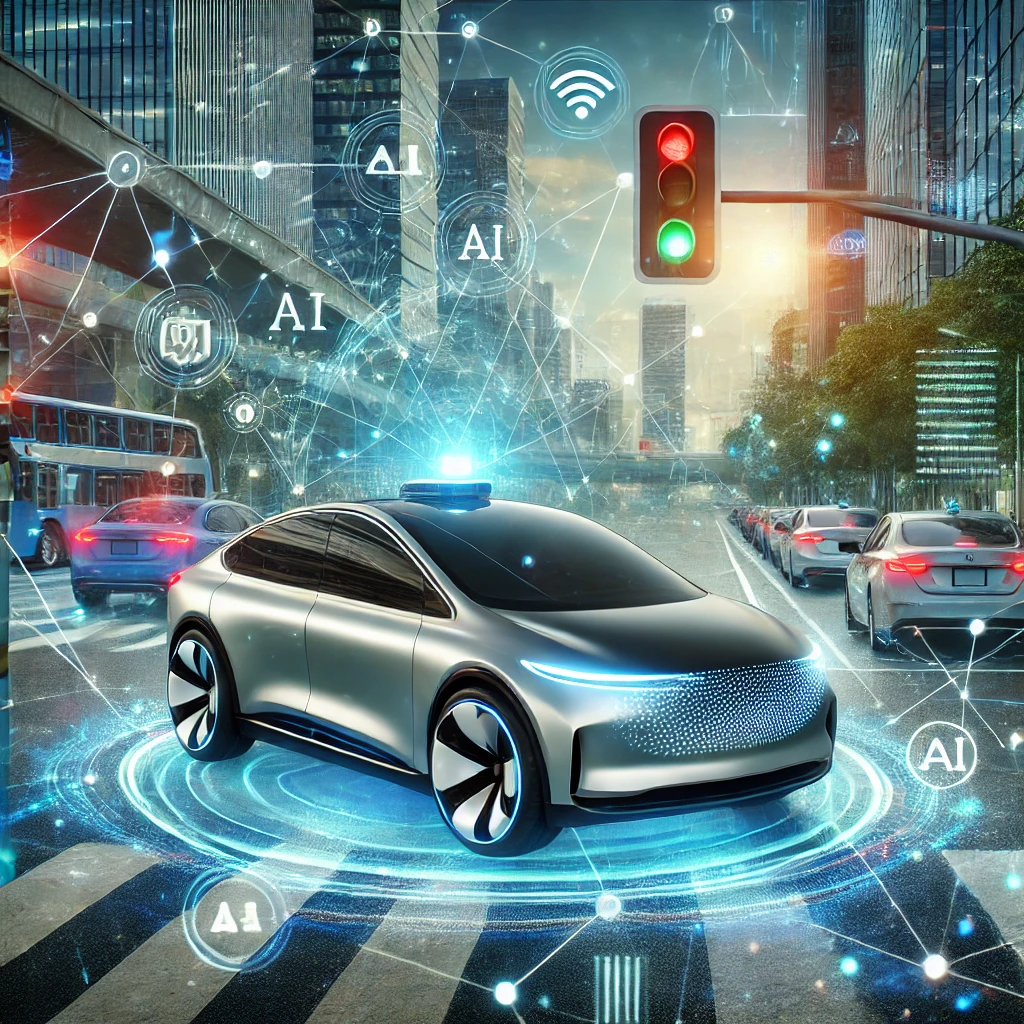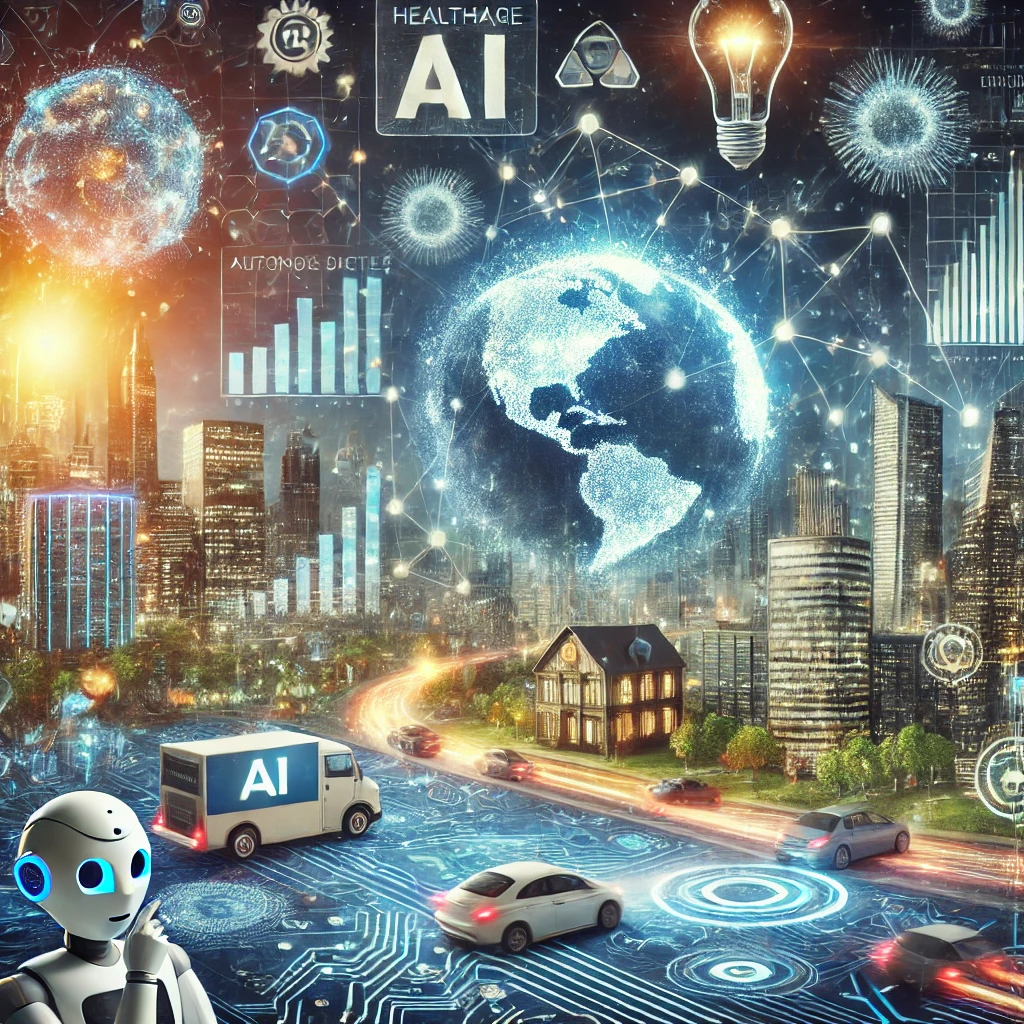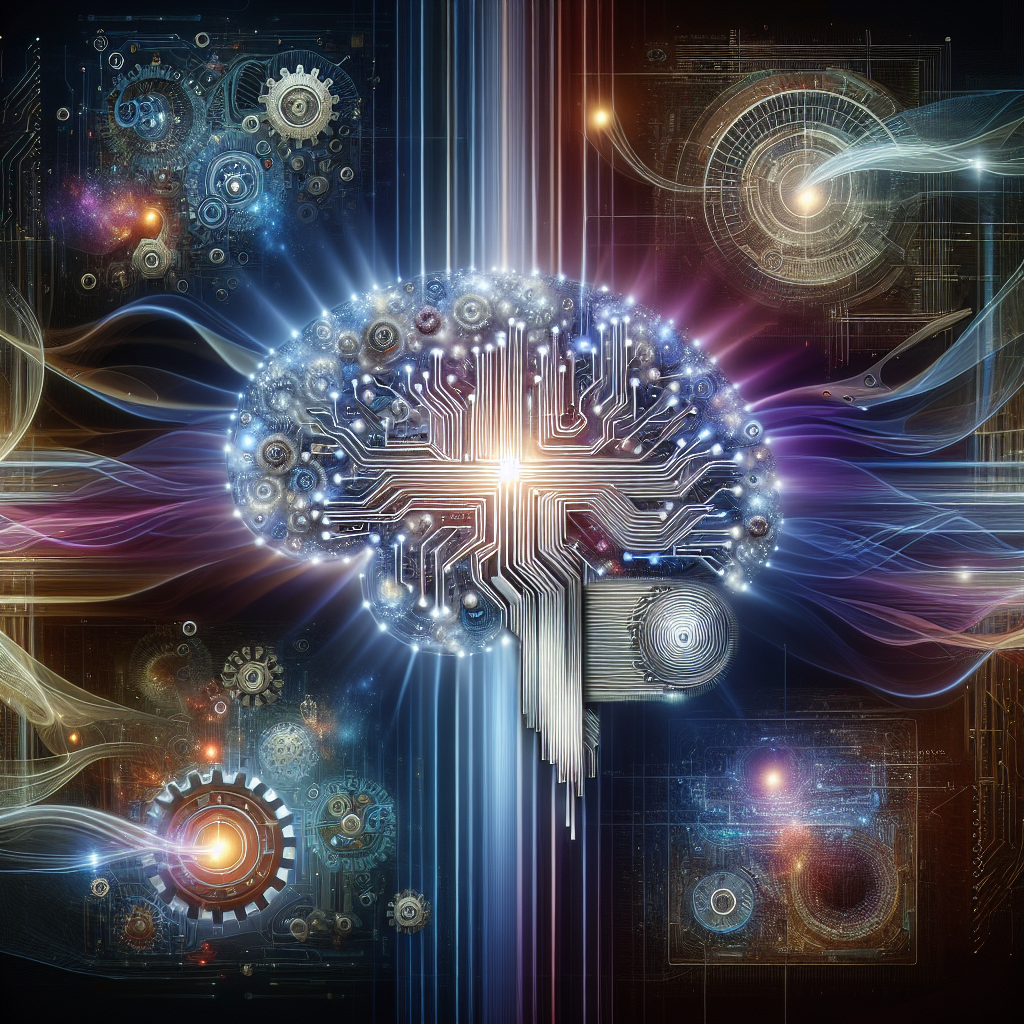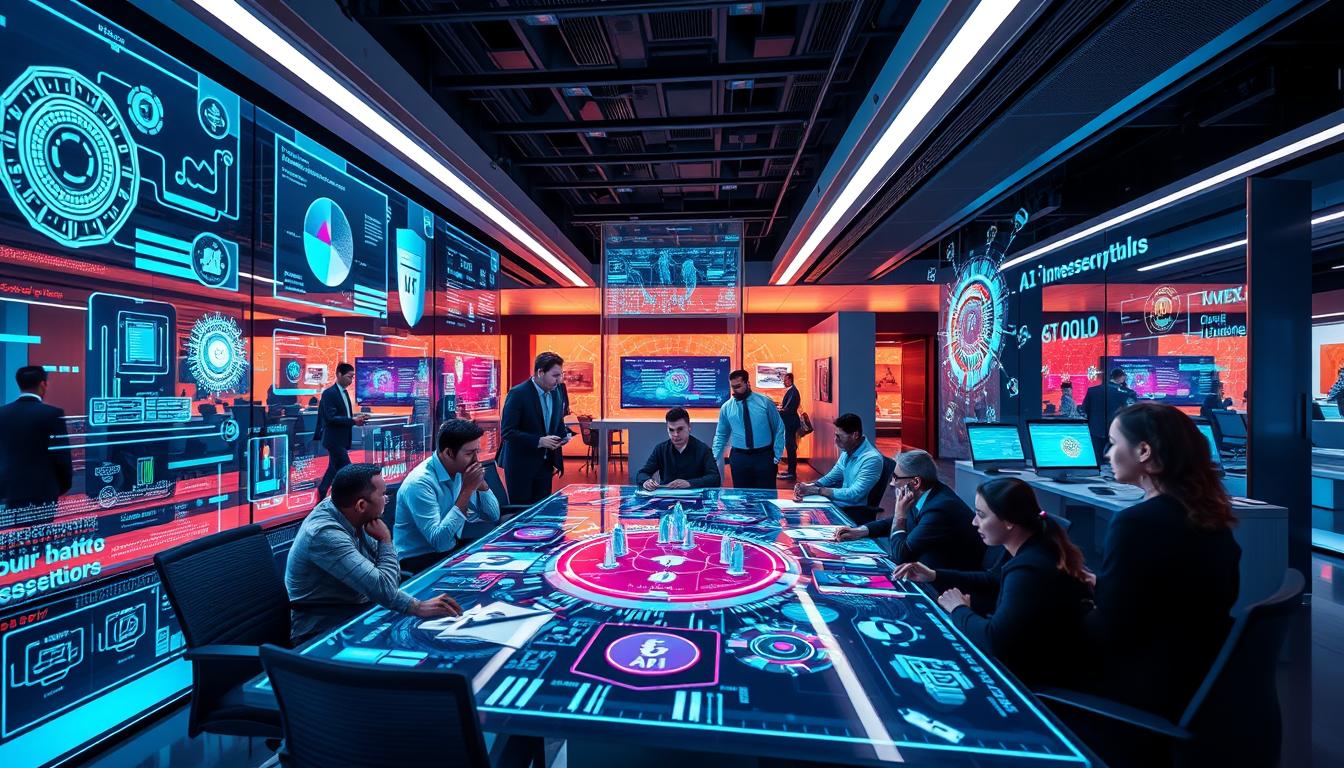Innovations in AI are fundamentally reshaping industries, transforming fields from entertainment to healthcare, and revolutionizing business operations. These advancements drive significant changes, enabling unprecedented automation, intelligent decision-making, and highly personalized user experiences. In this comprehensive exploration, we delve into groundbreaking AI Innovations, their applications across diverse sectors, and case studies showcasing AI’s transformative power.
This article also answers crucial questions, including What does innovation mean and How does AI impact the future of work? Additionally, we’ll explore how AI is helping companies like Netflix and Bank of America innovate and stay ahead in their respective industries.
Table of Contents
“Curious about how AI innovations are transforming industries and creating a smarter, more connected world? This video dives into the latest AI advancements, exploring real-world applications that are reshaping fields like finance, healthcare, and autonomous systems. Discover the power of AI and how it’s setting the stage for future innovation. Click play to see how AI is redefining what’s possible!”
Watch: How Innovations in AI are Shaping the Future
1. What Does Innovation Mean in AI?
Defining Innovation in AI
Innovation refers to the introduction of new ideas, methods, or products that add value. In the context of AI Innovations, it means advancing smarter algorithms, enabling machines to learn and adapt, and creating solutions that tackle problems in ways once thought impossible. This concept of AI-driven innovation is about pushing boundaries and unlocking unprecedented potential in various fields.
Forms of Innovations in AI
In the field of AI, innovation can appear in various forms:
- Product Innovation: AI Innovations are behind the development of autonomous vehicles, advanced medical imaging tools, and sophisticated recommendation systems.
- Process Innovation: AI-driven automation allows businesses to streamline operations, boosting efficiency and productivity.
- Service Innovation: AI Innovations power personalized experiences, from customer service chatbots to intelligent financial advisors.
Understanding innovation within AI requires recognizing how it can optimize complex processes and unlock new possibilities for businesses and society.

2. Key Innovations in AI: A Deep Dive
AI technology is evolving at a rapid pace, with groundbreaking AI Innovations transforming multiple industries over the past decade. Below are some of the most impactful innovations in AI and their applications:
2.1 Reinforcement Learning: Self-Improving AI Systems
Reinforcement learning (RL) is one of the significant AI Innovations, a branch of machine learning where agents learn to make decisions by interacting with their environment. Unlike supervised learning, which relies on labeled data, reinforcement learning enables the model to improve over time by learning from its own experiences.
Applications of Reinforcement Learning
Reinforcement learning, as one of the key AI Innovations, has versatile applications across various fields:
- Autonomous Vehicles: Self-driving cars utilize RL to navigate complex environments and make quick decisions, such as obstacle avoidance and route optimization.
- Personalized Treatment Plans: In healthcare, AI systems employ reinforcement learning to develop optimal treatment plans by analyzing patient data and outcomes, resulting in highly personalized care.
- Robotic Automation: Industrial robots benefit from RL, allowing them to refine tasks over time, enhancing precision and efficiency in the manufacturing process.
2.2 Generative AI: AI as a Creator
Generative AI refers to models that can create new content, such as text, images, or even music. Models like GPT-4 and DALL-E are examples of generative AI, which produce human-like text or highly detailed images based on input data. These AI systems are transforming industries that rely on creativity, such as marketing, media, and product design.
Applications of Generative AI:
- Content Creation: Generative AI tools are used to produce blog posts, marketing copy, and video scripts automatically.
- Art and Music: AI-generated artwork and music compositions are being used in creative industries, offering new forms of expression.
- Drug Discovery: Generative AI is being used to design new molecular structures for drugs, significantly speeding up the research process.
2.3 Natural Language Processing (NLP): AI That Understands Human Language
Natural Language Processing (NLP) enables AI systems to understand, interpret, and generate human language. With advancements like transformer models, AI’s ability to process and respond to human text has improved dramatically, allowing it to perform tasks like summarization, translation, and question-answering.
Applications of NLP:
- Chatbots and Virtual Assistants: NLP powers chatbots that can handle customer inquiries, improving service efficiency.
- Sentiment Analysis: Companies use NLP to analyze customer feedback, reviews, and social media posts to gauge public sentiment.
- Automated Translation: Tools like Google Translate use NLP to offer accurate real-time translations, bridging communication gaps.
2.4 Explainable AI (XAI): Transparency in AI Decision-Making
Explainable AI (XAI) addresses the need for transparency in AI decision-making. As AI systems become more complex, understanding how they arrive at decisions becomes essential, especially in industries like healthcare and finance where trust and accountability are critical.
Applications of XAI:
- Healthcare Diagnostics: XAI helps doctors understand the reasoning behind AI-generated diagnoses or treatment recommendations, improving confidence in AI-assisted care.
- Finance: Financial institutions use XAI to explain credit scoring, loan approvals, and investment decisions to their clients, ensuring accountability.
- Legal: XAI helps provide clarity in AI-driven legal decisions, ensuring transparency and fairness in judicial processes.
2.5 AI in Edge Computing: Real-Time Decision-Making
Edge computing involves processing data closer to its source, such as on local devices rather than in a centralized cloud. AI models deployed at the edge allow for faster, real-time decision-making. This is particularly important in industries where quick responses are essential, such as autonomous vehicles and industrial IoT systems.
Applications of AI in Edge Computing:
- Smart Cities: AI-powered edge devices monitor traffic and energy usage in real-time, improving urban efficiency.
- Autonomous Vehicles: Self-driving cars rely on edge computing to process data from sensors and cameras instantaneously.
- Wearable Devices: AI-driven wearables provide real-time health monitoring, offering timely feedback on users’ physical conditions.
2.6 Innovations in AI for Sustainability: Tackling Climate Change
AI Innovations are playing a crucial role in the fight against climate change and advancing sustainability efforts. By analyzing extensive datasets, AI can optimize resource usage, cut emissions, and enhance energy efficiency. AI-powered models also predict environmental patterns, offering actionable insights to drive climate action.
Applications of Innovations in AI for Sustainability:
- Energy Efficiency: AI Innovations optimize energy use within power grids, reducing waste and significantly lowering carbon footprints.
- Sustainable Agriculture: AI-powered systems assist farmers in reducing water and fertilizer use, improving crop yields, and minimizing environmental impact.
- Wildlife Conservation: AI-driven drones monitor endangered species, helping prevent illegal activities like poaching and supporting conservation efforts.
2.7 Innovations in AI in Healthcare: Transforming Diagnostics and Treatment
AI Innovations have significantly advanced healthcare by enhancing diagnostics, treatment planning, and drug discovery. With machine learning models analyzing medical data faster and more accurately than human doctors, these advancements enable earlier disease detection and improve patient outcomes.
Applications of Innovations in AI in Healthcare:
- Medical Imaging: AI Innovations enable systems to analyze CT scans, MRIs, and X-rays, identifying diseases like cancer and neurological disorders more accurately.
- Predictive Analytics: AI models use predictive analytics to forecast patient outcomes based on historical data, assisting doctors in making informed treatment decisions.
- Personalized Medicine: By applying AI Innovations, treatments are tailored to individual patients’ genetic profiles, increasing the effectiveness of care.
2.8 Innovations in AI in Finance: Enhancing Risk Management and Fraud Detection
AI Innovations are transforming the finance sector by strengthening risk management, improving decision-making, and identifying fraudulent activities. By processing vast amounts of financial data, AI systems deliver real-time insights into market trends, enabling institutions to make more informed investment choices.
Applications of Innovations in AI in Finance:
- Fraud Detection: AI Innovations algorithms scrutinize transactions for suspicious patterns, effectively preventing fraud.
- Trading Algorithms: AI-powered trading models evaluate market conditions, helping to optimize investment strategies for better returns.
- Customer Support: AI-driven chatbots offer personalized financial guidance, enhancing customer service and engagement within the financial industry.

2.9 Innovations in AI in Autonomous Systems: The Future of Self-Driving Vehicles
Autonomous systems, including self-driving cars and drones, represent some of the most prominent AI Innovations. These systems rely on AI to process data from sensors, cameras, and radar, enabling safe navigation and real-time decision-making without human involvement.
Applications of Innovations in AI in Autonomous Systems:
- Self-Driving Cars: AI Innovations empower autonomous vehicles to navigate roads, avoid obstacles, and make driving decisions instantly.
- Drones: AI-driven drones are utilized for various tasks, from package delivery to monitoring agricultural areas for precision farming.
- Logistics Automation: AI systems optimize warehouse operations and streamline supply chain processes, enhancing overall efficiency through automation.

2.10 AI in Robotics: Enhancing Precision and Efficiency
AI is enabling robots to perform increasingly complex tasks, making them valuable in industries like manufacturing, healthcare, and logistics. AI-powered robots improve precision and efficiency, particularly in repetitive or dangerous tasks.
Applications of AI in Robotics:
- Manufacturing: AI-driven robots handle assembly, packaging, and quality control tasks in industries like automotive and electronics.
- Healthcare Robotics: AI-powered surgical robots offer enhanced precision during complex surgeries, reducing recovery times for patients.
- Retail and Hospitality: Robots equipped with AI provide personalized customer experiences in retail stores and hotels, enhancing service delivery.
3. How AI Can Improve Physical Therapy Research and Clinical Innovation
AI is playing a pivotal role in improving physical therapy by enhancing research capabilities and providing more personalized treatment options. Through the use of AI-powered tools, physical therapists can monitor patient progress more effectively, offer real-time feedback, and improve patient outcomes.
How AI Enhances Physical Therapy:
- AI-Powered Motion Tracking: These systems track a patient’s movement during physical therapy sessions and provide data-driven feedback to therapists.
- Predictive Analytics: AI can predict recovery outcomes based on patient data, helping physical therapists design more effective treatment plans.
- Tele-Rehabilitation: AI-based platforms enable remote physical therapy sessions, making therapy more accessible for patients who cannot visit clinics.
4. What Does Aurora Innovation Inc. Do?
Aurora Innovation Inc. is a leader in autonomous vehicle technology, specializing in developing AI-powered self-driving systems. Aurora’s technology is designed to improve transportation by making it safer, more efficient, and more accessible.
Aurora Innovation’s Focus Areas:
- Autonomous Vehicles: Aurora’s AI systems enable cars to navigate complex environments without human intervention.
- Safety and Reliability: Aurora prioritizes safety by using AI to monitor road conditions, detect obstacles, and ensure a smooth ride.
- Partnerships with Automakers: Aurora collaborates with major car manufacturers to bring its self-driving technology to market.
5. How IDEO Helped Bank of America Innovate with AI
IDEO, a global design consultancy, partnered with Bank of America to help the bank innovate through the use of AI technology. By focusing on customer-centric design, IDEO helped Bank of America develop AI-driven solutions that improved customer engagement and streamlined banking services.
Innovations by IDEO:
- Virtual Assistants: AI-powered chatbots provide personalized support to Bank of America’s customers, improving service efficiency.
- Data-Driven Decision Making: IDEO helped implement AI tools that analyze customer data, enabling the bank to offer tailored financial solutions.
- Enhanced Customer Experience: By leveraging AI, Bank of America was able to optimize user interactions, providing a seamless banking experience.

6. How Netflix Uses Customer Role Playing to Innovate
Netflix is known for its innovative approach to content delivery and customer experience. One of the strategies the company uses is customer role playing, where employees simulate customer interactions to better understand user preferences and pain points.
But how does Netflix use customer role-playing to innovate? By putting themselves in the customers’ shoes, Netflix teams gain valuable insights into how users navigate the platform and interact with content. These insights are then fed into AI algorithms that power Netflix’s recommendation engine, ensuring that each user receives personalized content suggestions.
How Netflix Uses Role Playing and AI:
- User-Centric Design: Customer role-playing allows Netflix to refine its user interface and make it more intuitive.
- AI-Driven Personalization: Netflix’s recommendation engine uses AI to analyze viewing habits and recommend shows based on user preferences.
- Content Innovation: Netflix leverages AI to optimize content production, ensuring that new shows and movies resonate with its audience.
7. How Roblox Uses AI and Technology to Build an Engaging Platform
Roblox is another company that has leveraged AI and technology to create an engaging platform for its users. Roblox allows users to create their own games and experiences, and AI plays a key role in ensuring that the platform remains safe and enjoyable for all users.
How Roblox Uses AI:
- User-Generated Content: AI-driven tools enable users to create and share their own games, fostering creativity and engagement.
- Content Moderation: AI-powered moderation systems scan millions of games and interactions, ensuring that Roblox remains a safe space for players.
- Personalized Game Recommendations: AI analyzes user behavior to suggest games and content tailored to individual interests, enhancing user satisfaction.
8. The Future of AI: Key Trends and Predictions
As AI continues to evolve, several key trends are expected to shape its future. These include the integration of AI with emerging technologies like quantum computing, the rise of human-AI collaboration tools, and the development of ethical AI systems.
AI and Quantum Computing
Quantum computing is expected to revolutionize AI by enabling machines to process data at unprecedented speeds. This could lead to breakthroughs in fields like drug discovery, climate modeling, and cryptography.
Human-AI Collaboration
As AI becomes more advanced, there is growing interest in how humans and AI can collaborate to solve complex problems. Human-AI collaboration will play a significant role in industries like healthcare, education, and manufacturing, where AI can augment human creativity and decision-making.
Ethical AI
The development of ethical AI systems will be crucial in ensuring that AI is used responsibly and fairly. Issues such as bias in AI algorithms, data privacy, and accountability will need to be addressed to build trust in AI technologies.

9. Ethical Considerations and the Governance of AI
As AI becomes more prevalent in everyday life, ethical considerations around its use are gaining importance. Issues like data privacy, bias, and accountability must be addressed to ensure that AI benefits society as a whole.
Bias in AI Algorithms
AI systems are trained on data, and if that data contains biases, the AI model may produce biased outcomes. This is particularly concerning in areas like hiring, lending, and law enforcement, where biased AI decisions can have serious consequences.
Data Privacy
AI systems rely on vast amounts of data to function effectively. Ensuring that these systems respect user privacy and comply with data protection regulations is critical for building trust in AI.
Governments and organizations will need to establish clear guidelines for AI governance to ensure that these technologies are used responsibly and ethically.
10. AI and the Future of Work: Upskilling and Reskilling
AI is transforming the workforce by automating routine tasks and augmenting human capabilities. However, this transformation also means that workers need to develop new skills to remain competitive in an AI-driven world.
Upskilling the Workforce
As AI continues to evolve, workers will need to acquire new skills to adapt to the changing technological landscape. Upskilling and reskilling initiatives will be crucial in helping workers transition to new roles in fields like AI development, data science, and human-AI collaboration.
11. Conclusion: The Future of AI Innovation
AI innovations are reshaping industries, driving business success, and improving customer experiences. From healthcare and finance to entertainment and logistics, AI-powered solutions are providing new opportunities for growth and efficiency.
As AI continues to evolve, it will play an even greater role in shaping the future of technology and innovation. Businesses, entrepreneurs, and individuals that embrace these innovations will be well-positioned to succeed in an increasingly AI-driven world.
. Dr. Innovus focuses on delivering up-to-date information about AI Innovations and their transformative effects across industries like healthcare, finance, and autonomous systems.
To dive deeper into the world of Generative AI, you can read more on our Generative AI section at AI Research Trend. Additionally, explore this Google AI Research page for authoritative insights into cutting-edge AI advancements globally.
For more comprehensive coverage on AI trends, feel free to visit our AI Innovations section. Dr. Aiden Innovus continues to explore how AI is revolutionizing various industries and what the future holds for this exciting technology.
Learn More:
Explore related topics and discover additional articles by Dr. Aiden Innovus for a comprehensive view.











1 thought on “Innovations in AI: Transforming Industries and Future Trends”